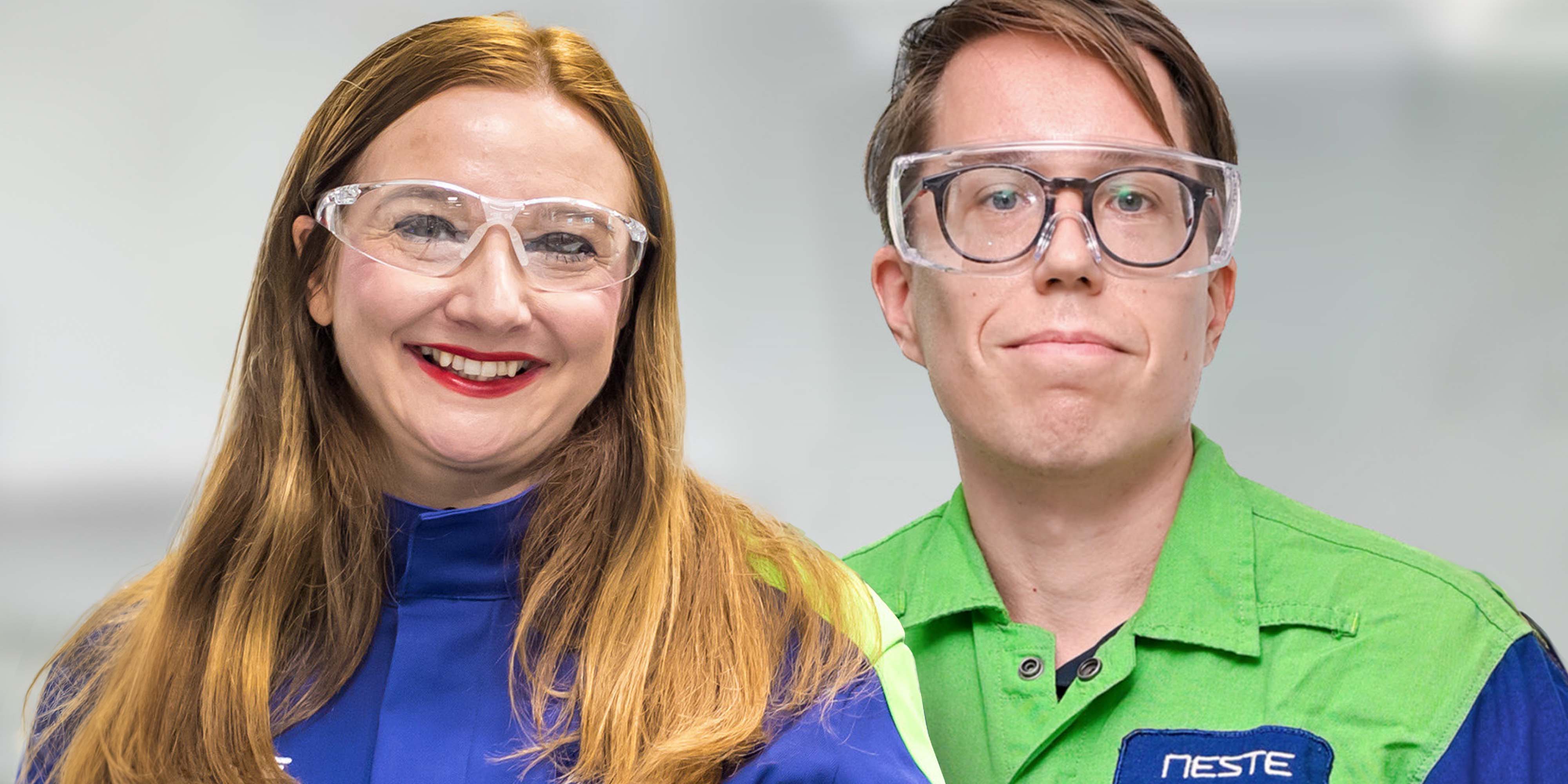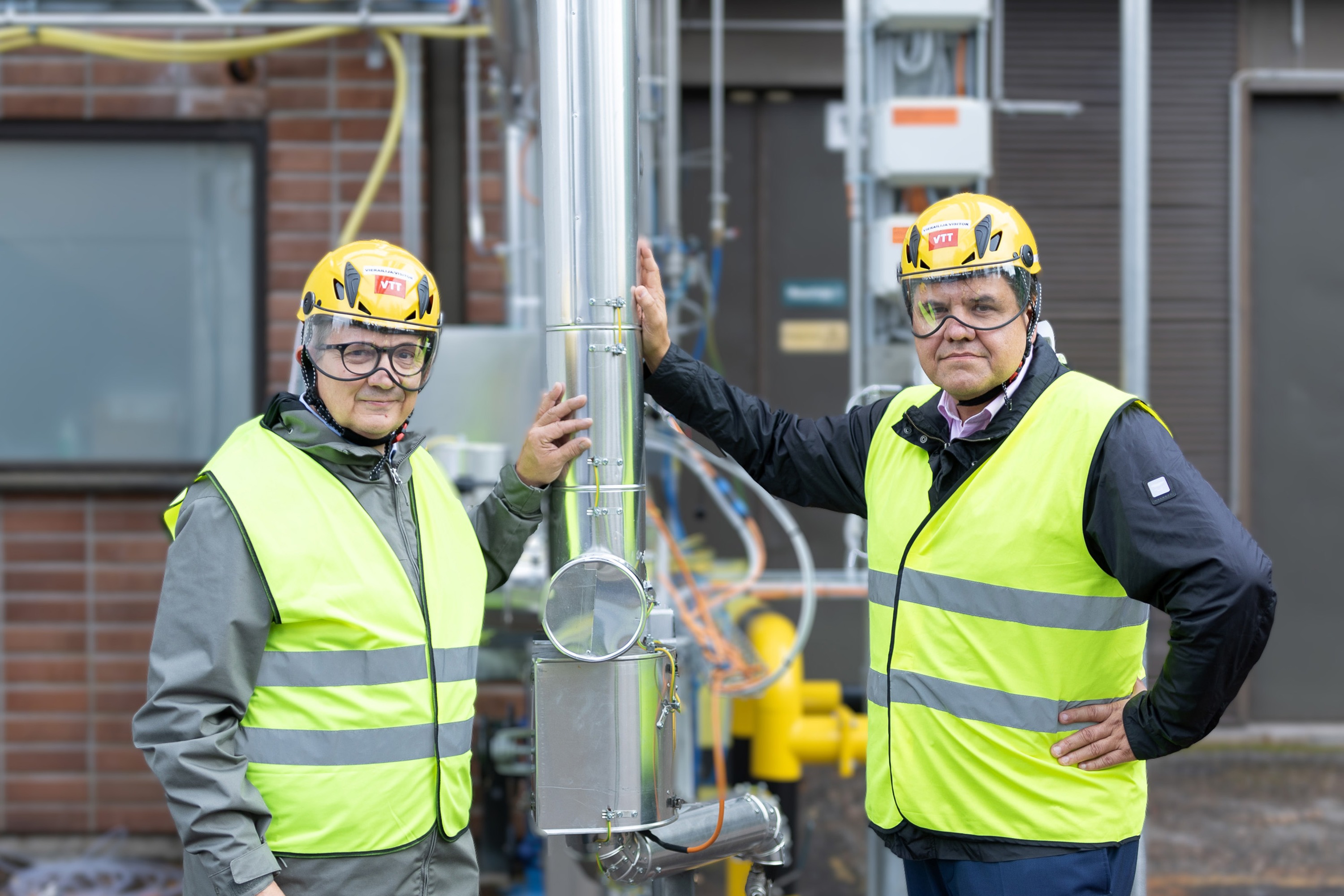
Innovation
9 minute read
Building an innovator’s mindset – 5 lessons from top researchers
Pollination between research institutions and private companies is the only way we can reach a circular economy, claims Neste’s VP of Innovation, Discovery and External Collaboration Perttu Koskinen. Here, he shares five lessons he’s learned about boosting innovation from working with top researchers.
In this uncertain time for business development, one thing is for sure: the age of the internal R&D strategy is over. In the 2010s, the world saw an explosion in the number of research collaboration between companies and universities, with no end for the growth in sight.

“With the pace of innovation accelerating year to year, there is not a single company in the world anymore that can survive without external partners. You need to collaborate with top research institutions to find new signals, ideas and talent sufficiently quickly to survive,” states Neste’s VP of Innovation, Discovery and External Collaboration Perttu Koskinen.
Circular economy challenges organizations to collaborate across industries.
Collaboration around research and technology development is something Neste has done for decades, with around 1,000 of the company’s more than 4,000 personnel currently working in areas related to innovation. For 12 years, Perttu Koskinen has been one of them. Koskinen has, among other pursuits, led a pilot of developing oil from agricultural residues, such as straw, using microbes, as well as steered Neste’s long-term research portfolio of renewables and circular economy – the latter being a context that especially challenges organizations to collaborate across industries.
“In circular economy, there’s massive potential for industries that have no previous history of working together to find solutions where one industry’s waste becomes the other one’s feedstock. To find those links, you need to co-innovate and co-develop without prejudice,” Koskinen notes.
But even for pioneers, innovation is not an easy exercise. While companies’ R&D spending reached record-high numbers in the 2010s, many experts argue that companies may have become worse at R&D, receiving less and less returns for their money. It’s a known fact that the amount of investment is not the deciding factor of whether innovation efforts are successful – but what’s the key to innovation success, then?
In one word, the answer is culture. Success in innovation comes down to how well companies manage to spend their resources on creating products that truly connect with their customers, as well as the quality of talent, processes and decision making, according to the annual R&D report by PwC’s strategy consulting business unit, Strategy&.
But how can a manager support a culture of innovation in her organization – and in herself?
One famous idea comes from Max Born, the German physicist and 1954 Nobel prize winner instrumental in the development of quantum physics: “Science is not formal logic – it needs the free play of the mind in as great a degree as any other creative art.”
Perttu Koskinen shares the lessons he’s learned from collaborating with top researchers on how to let innovative minds play free – all the while increasing R&D returns.
1. Innovation is combining unrelated ideas
“Research is formalized curiosity. It is poking and prying with a purpose,” said renounced author and anthropology researcher Zora Neale Hurston, one of the leaders of the Harlem Renaissance, a blossoming of African American art and intellectual culture in Harlem, New York in the 1920s.
Perttu Koskinen agrees. Having led teams of scientists in Neste’s university collaborations for years, curiosity is the common nominator Koskinen sees in the most innovative minds. “They are not fixed on their own agendas or expertise but open to noticing, adapting and listening to new insight,” he describes.
Leading innovators combine well-known concepts into something previously unthought-of.
Most importantly, Koskinen says, leading innovators have an ability to combine well-known concepts into something previously unthought-of. “There’s thing A and thing B but it hasn’t occurred to anyone that the two could work together. When you combine those two unrelated ideas, that’s innovation – and how the most significant inventions are discovered,” Koskinen enthuses.Koskinen gives an example from the world of sustainable fuels, a hot field of business growing in sales even amidst the global pandemic: Neste’s NEXTBTL technology, a product of years and years of Neste’s R&D efforts with external research partners.In the beginning, Neste had an underlying idea of transforming renewable raw materials into not just any fuel, but a high-quality diesel in particular – something no other company had previously succeeded in on a commercial scale.
Researching various potential renewable raw materials, Neste’s R&D team realized that oils and fats would be ideal as they include long chains of hydrocarbons – a component also found in the virgin fossil raw materials they were determined to replace.
“Then, our researchers combined these renewable long-chain molecules with our thorough know-how of how to refine fossil-based hydrocarbons. It worked like a charm: they ended up developing a way of converting these renewable compounds into a diesel fuel of the best quality,” Koskinen shares.
The end result of the experiments, today known as Neste MY Renewable Diesel, is a premium quality fuel made from 100 percent renewable raw materials. It results in up to 90 percent less greenhouse gas emissions over the fuel’s life cycle compared to fossil diesel. Beyond road transportation, the same innovative technology has been further developed to also produce Neste MY Renewable Jet Fuel for aviation, renewable chemicals as well as for renewable plastics production.
2. Keep a keen eye on basic research
In the age of book summary sites and apps, with media breaking new research into catchy headlines and the popularity of non-fiction books rising year by year, it’s easier than ever satisfy your thirst for new knowledge with engaging, neatly popularized content. However, Koskinen reckons that no matter where you are in your career, you can never afford to stop following what’s at the root of all that information: basic research by top research institutions.
Keeping up with basic research forces your brain to think holistically.
“You’ll probably know how to create future scenarios within your current field of business,” Koskinen says. “But when the goal is to create something transformative, you’ll need to look further. To find new insight and tools fresh out of the lab, basic research is where you want to look. And do what researchers do and follow research beyond your own field for fresh perspectives.” Following knowledge to its core also helps with a concern Koskinen has about our modern world: our bias towards over-simplifying complicated questions. Luckily, keeping up with basic research has the tendency to force your brain to think holistically. Koskinen draws a telling example related to an issue Neste is trying to solve: how to fight climate change and step away from using virgin fossil raw materials. “As much of public discourse is focused on decarbonizing mobility, it’s easy to buy into the idea that electrification is going to be a cure-all. But what about fossil use in places we don’t see in our everyday lives, such as petrochemistry and freight, and in aviation?” Koskinen asks. “If you look at research, it’s clear that the only way to reach our climate goals is to use all solutions combined; electricity, liquid and gaseous renewable fuels and synthetic fuels via Power-to-X technology, and so on.”
3. Mind the language gap
“Every now and then, a highly innovative individual may discover a major innovation all by themselves, but that’s the exception to the rule. And at the latest, they’ll need other people when it’s time to refine that idea,” Koskinen says. To Koskinen, efficient co-creation is the most essential building block for innovation. Another crucial part is that you don’t build a house by envisioning it but by laying bricks one by one. For Neste, that means that from the very beginning of each research project, engineers and business developers collaborate with researchers. “Bringing people together across disciplines is something we’re very good at,” Koskinen says. ”Researchers develop great ideas, process engineers contribute to make technology industrially scalable and business developers make concepts commercially viable. The intensive interplay between all of these disciplines is the essence guiding R&D work.”
4. Be radically open about your motivations
Traditionally, there has been somewhat of a gap between the ambitions of early-stage research initiatives and commercial development: the first has been about knowledge, the latter about profit. However, the opposite ends have moved closer together in recent years, wrote the Dean of Boston University’s College of Engineering Kenneth R. Lutchen on Harvard Business Review. Companies are increasingly taking on the challenge of becoming mission-driven changemakers, whereas universities embrace a new, broader societal role; they’re tackling the UN’s sustainable development goals and driving economic growth, emphasizing values such as entrepreneurship and societal impact.
The more open you are about the project’s underlying motivations, the better results you get.
With innovators navigating new ground in terms of roles, ambitions and economic reality, it’s more important than ever to achieve mutual trust between collaborators. For Koskinen, the best tactic has been radical honesty. “I’ve experienced that the more open you are about the project’s true, underlying motivations and goals for your company, the better results you get,” he says. “By showing an example of openness you build trust – and trust is the only way to combine internal and external collaborators into a one team that can find the absolute best solution.”
5. Stay stubborn
“The scientific man does not aim at an immediate result. He does not expect that his advanced ideas will be readily taken up. His work is for the future. His duty is to lay the foundation for those who are to come, and point the way,” electricity pioneer Nikola Tesla has reportedly said.
For Perttu Koskinen, the ethos is simply this: stay stubborn."Creating transformative innovation takes long-term commitment and a certain stubbornness. When you’re developing new things, there will be breakthroughs – but also breakdowns. There’s no way to avoid heavy times, and that’s when you need commitment and courage to keep pushing things forward.” What’s important is to not let short-term business goals steer innovation. If the best line of long-term development means cannibalizing current business, innovators should enjoy enough trust in their organization to suggest taking that path. If they don’t, you can trust competitors to eat up the current business instead.
In the daily grind, Koskinen finds constant motivation in celebrating the little wins; every successful experiment in the lab or small progress in the project; each fruitful meeting with colleagues. “Celebrating failures is equally important, as failure is the best source of learning. Even on a general level, efficient R&D work is based on rapid cycles of experimentation and learning,” says Koskinen. What drives him the most is the change Neste’s Innovation team is creating in the world together with top tier partners. “This is not about some one-off PR effort. Every day, we’re collaborating to find big, globally scalable new solutions to create a healthier planet for our children."
Credits: Richard Pallardy, science writer Richard Pallardy has worked as an editor for Encyclopedia Britannica. His writing has also appeared in National Geographic Learning publications, on Earth.com and Areo Magazine.





